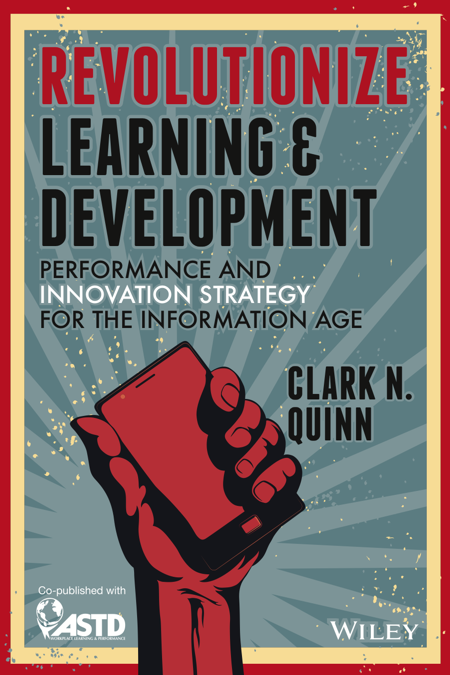A number of the Change Agents Worldwide resonated with an image of the 50 reasons not to change at work that was overlaid on an image of Doug Engelbart. The point, of course, is that all these reasons not to change provide a significant barrier to success. We decided that we‘d line up and start a blog carnival with each of us addressing one. I decided to address number 45:
45. We‘re doing all right as it is.
First, do you have evidence for that, or are you in denial? It‘s easy to not want to change because it‘ll be hard, so it‘s easier to say that things are OK. It is particularly easy if you aren‘t really checking! L&D, for instance, has been notoriously bad about seeing whether their interventions are actually achieving any impact (around 3% reporting that they actually go to level 4 on Kirkpatrick‘s scale).
If you are checking, what are your benchmarks? Are you measuring just execution, or are you including innovation? Because, as I‘ve said before, optimal execution is only going to let you survive, to thrive you‘ll need continual innovation. If you‘re doing what your strategy says, are you looking out for disruptive forces, and creating your own? You should be checking to see if you‘re striking that balance of being able agile enough as well as productive enough.
Finally, is “all right†really good enough? Shouldn‘t we be shooting for the best, not just good enough? Do you think your competitors are sitting complacent? We really should be looking for every edge. That doesn‘t come from believing we‘re doing all right. We should be looking for continual improvement.
Yes, it‘s harder to not believe we‘re doing all right as it is, but your curiosity should be driving you forward regardless. Your organization, if it isn‘t continually learning, is declining. Are you really doing all right? If you‘re definition of ‘all right‘ is that you are continually curious and moving forward with experimentation, then I reckon so.

